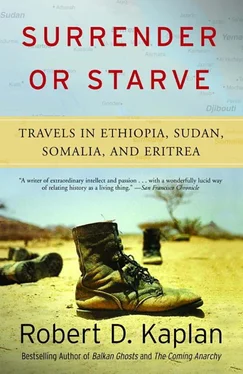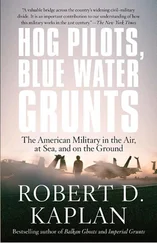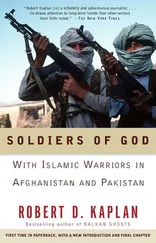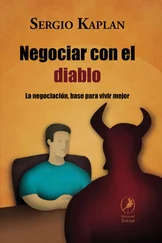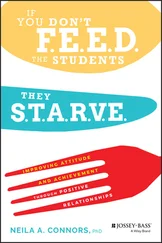As the Israelis have demonstrated, bravery derives from self-assurance, from the knowledge that whatever the risks, in the event of danger your superiors will go to the limit to save you. The Eritrean guerrillas have proved more than once their ability to take well-calculated risks, such as the January 14, 1986, attack, behind enemy lines, on the airbase at Asmara, in which the estimates of the number of MIGs and other planes damaged or destroyed went as high as forty. Again, by contrast, it is hard to imagine an army with a worse morale than the Dergue’s. Many of its soldiers are ethnic Oromos, Moslems from the southern lowlands of Ethiopia, themselves persecuted by the Christian Amharas, who were conscripted forcibly and given minimal training before being dispatched to the mountainous north of the country to fight the Eritreans, a people the Oromos have no interest in fighting. Nor are the Amharas in Mengistu’s army enthusiastic. Many of the officers were trained in the West during the reign of the emperor and resent the present government’s Marxist ideology and reliance on Soviet military assistance. The Amhara recruits, meanwhile, especially the educated ones, often desert or escape over the border before being drafted. The Ethiopian refugee camps in Somalia and Sudan are filled not just with peasants from the famine-wracked countryside, but with educated Amharas from Addis Ababa as well.
Concerning the EPLF, the comparison with the Israelis is by no means farfetched; it is useful to make this comparison, as it strikes at the heart of what makes the Eritrean guerrilla movement unique in the Third World and, by extension, explains why the ERA is so much more effective than is any other African relief group. Israel has long been noted for boldness in guarding the welfare of its citizens and, in some cases, of Jews outside the country. This was powerfully demonstrated during the rescue of 7,500 black Ethiopian Jews from the provinces of Gondar, Tigre, and Wollo in December 1984 and January 1985. For Leon Wieseltier, writing in The New Republic (Februrary 11, 1985), the rescue was an example of the Israeli “belief in action… the idea of getting things done promoted to the status of a principle.” In other words, as Wieseltier explained, “make the protestations, and make them again; but also arrange the border crossings, establish the transit stations, obtain the food.”
Unlike the Jews, the Eritreans come from a more backward part of Afro-Asia, nor have they had the cultural experience afforded the Jews by centuries of exile in the West. On the contrary, Eritreans always have lived in one of the most brutal, nasty corners of the world and can count even fewer friends on their fingers than can the Israelis. But, by the standards of their own plight and the region they inhabit, the Eritreans have put this principle of moral action into practice. While the U.S. public was awed by the Israeli deliverance of the Ethiopian Jews, at the same time and practically side by side, the EPLF was delivering its people—more than one hundred thousand of them—to the relative succor of emergency feeding centers on the Sudanese border; the EPLF provided these people with whatever water and food it could muster at transit stations set up along the way.
Of the approximately eight million peasants threatened with starvation by the Ethiopian famine, about two million were in EPLF-controlled areas. Yet despite the fact that in late 1984 and early 1985 ERA was the recipient, by some estimates, of less than 5 percent of all the international aid coming into Ethiopia, the efficiency of ERA, coupled with support from Eritrean expatriates in the West and in Saudi Arabia, kept the number of deaths in Eritrea in the tens of thousands; whereas in Dergue-held areas, as many as one million people are thought to have perished. Jack Shepherd, a food aid specialist at the Carnegie Endowment for International Peace, wrote in the Africanist journal Issue (14 [1985]) that the Eritrean guerrillas (along with those in Tigre) have “reversed the classical guerrilla warfare pattern: Instead of peasants supporting and feeding an army, the guerrillas are feeding and sheltering themselves and the peasants.”
“They are just like the Viet Cong,” remarked one visitor to Eritrea, “except unlike the Viet Cong, these people like each other.” The ERA clinic is a poignant illustration of this point. On a continent where people do the most horrible things to each other, the clinic is a rare institution. It was opened in May 1979 in an unfinished cement building on the outskirts of Port Sudan near the airport. There is not a tree in sight. The goats and stray dogs in the area escape the blazing sunlight of one of the hottest cities in the world by hiding under the rusted carcass of a school bus. Except for making the building available at a monthly rent, no help of any kind is provided by the Sudanese authorities. (Until ERA constructed a small dormitory structure for foreign relief workers and journalists, they had to stay in the clinic itself while waiting for transport into Eritrea.) The rooms teemed with flies by day and mosquitoes by night. In adjacent beds, on soiled mattresses, were close to one hundred amputees and paraplegics, children among them; they were victims of a war about which few people knew.
The clinic functions as both a school and a hospital. It is self-administered: even the teachers are amputees. The wheelchairs and artificial limbs are made and repaired by the patients themselves. Bedside classes are taught up to grade eight. The curriculum includes English, science, mathematics, ceramics, and music. The patients are kept constantly busy. During several days at the clinic in March 1985, and again in October 1986, I detected few signs of depression among the patients. “We have no psychological problems here,” said one of the teachers. “Our people accept everything.”
The clinic is part of an ERA health care network that includes six regional hospitals and an extension service with several hundred paramedics reaching villages and nomadic encampments throughout the EPLF zone. “I know of no other system, which, given the same conditions and resources available, operates as efficiently,” said Dr. Sam Richard Toussie, a Columbia University epidemiologist and rural health specialist, who has worked in insurgent areas of Africa, Asia, and Central America. The EPLF’s biggest success has come in the area of infant care. Since 1982, the number of nomads within the EPLF base area giving birth in hospitals has risen 50 percent. Dr. Abrehet Kidan, a Syracuse University–trained gynecologist, said that in 1986 a project was begun to burn all nonsterilized bottles in Eritrea in order to cut down on infections and to encourage mothers to breast-feed longer. Still, 56 percent of Eritrean children are malnourished (compared with 80 percent in mid 1985), according to Dr. Assefaw Tekeste, head of the Orotta hospital, and the general population suffers from all the usual tropical diseases. In large part, this is due to the war-wrought isolation of Eritrea, a constant shortage of supplies filtering into the base area, and the difficulty of reaching people in EPLF territory behind Dergue lines.
ERA’s primary function is as an agricultural development and famine relief organization; the ERA is responsible for farms, displaced persons camps, and resettlement schemes. Even in Nakfa, amid the ruins of the town, cabbage, cauliflower, eggplants, sunflowers, and eleven different kinds of tomato are being raised with the help of a motorized water pump captured in 1977 from the Dergue. At Himer, further west in the direction of the Barka plain, 150 irrigated acres of millet and sorghum are under cultivation on a sandy desert so parched that there is not a tree or a bush in sight. The number of displaced persons camps doubled in late 1984 to more than twenty, with an average population of five thousand for each camp. The reason for the increase again was war, not drought, as stepped-up MIG bombing raids on villages drove many Eritrean peasants out of their homes.
Читать дальше
